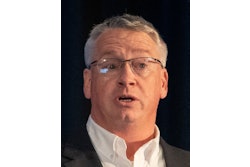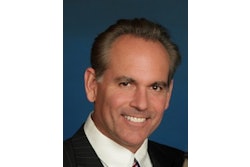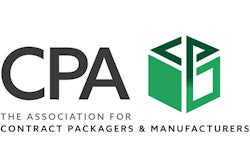Quick hits:
- Multipacks are a tough nut to crack for any large-scale bottler or canning operation, and it becomes a question of who gets to manage the complexity involved. Budweiser uses a mix of contract packaging where not cost prohibitive, and in-house operations leaning heavily on buffer and accumulation, to share the complexity load.
- Anheuser Busch discusses what types of technology they’re asking for from their OEM partners. Namely, they’re looking for equipment that’s easy to use and maintain since nearly 40% of their workforce could retire at any moment, and younger, less experienced workers are filling the gaps.
- The recent seltzer boom is slowing, but still going strong, and Ken VonderHaar, Global Director, Can Division at Anheuser-Busch and Budweiser thinks there’s still new territory to cover vis-à-vis new flavors and fresh SKUs.
- Interview: Anheuser Busch & Budweiser’s Approach to Can & Bottle Mix
- Live at the Craft Brew Conference: Is the Pint Glass Half Full or Half Empty?
 | Read the transcript below: |
Ken Vonderhaar: Hello, I'm Ken Vonderhaar, with Anheuser Busch Budweiser, and I've been with the company for 34 years. And today we're hosting PMMI in our tourist center to talk about packaging operations and talk a little bit about beer.
Matt Reynolds: Seltzers were the most recent big boom in your industry. And you mentioned that they're sharp rise is starting to slow. So what's the next big trend?
Ken Vonderhaar: It's hard to say what the next trend is, because the consumer defines the next trend. We think that the seltzer market still has more legs to it, more flavors, and that type of thing. But our innovations team are constantly working on all kinds of different brands and all kinds of different varieties to try to figure that out. And we'll test market that and see what sticks.
Matt Reynolds: Budweiser is doing some interesting things with multi-packing and rainbow packs. Tell us about your early experience cutting your teeth with in-house equipment and what the balance is of what you keep in house versus contracting out to contract packagers.
Ken Vonderhaar: So we've installed two lines that will make the variety pack. And of course a variety pack is a lot of SKUs we have to run, so we spent years actually studying what's the right way to try to install a variety pack line. Do you palletize a bunch of product for days and days and you only make a brand change every three or four days on the filler, and then you mix it together? We found out that wasn't really the right solution from an economics perspective. So what we've chosen to do is make lines with large, full can accumulation systems on it. So about every four hours, we will convert from flavor A to flavor B and C and D. And then once we're running flavor D, we will merge the other three flavors together into the packer and put that together. So we have two operations that do that. We have two different design concepts on how that is done. And as with anything, there's pros and cons to both design concepts. But essentially, it's full can accumulation, and then we're running it to the packer. What we have found is that of course this adds great complexity, it increases our changeover time, and it reduces our yield for the line (because we're constantly changing to the new brand). And that's always in competition with just getting high volume brands out the door. So with our high volume brands, you can run Bud Light, say for a week. And the question is always a balance between how much of that do I want to do and let co-packers manage that complexity segment versus how much do we want to do it in house. And it really comes down to what is the cost of co-packing. And in some areas the cost is fairly high and it allows us to make a pretty significant investment and make a good economic return. And in some other areas it will not.
Matt Reynolds: An organization like Anheuser Busch and Budweiser has a lot of equipment, sometimes from competing OEMs. You mentioned Seamers from Ferrum and Angeles for instance, how do you think about trying to consolidate and standardize your training at a new dedicated facility—and that's more important than ever right now—when you've got such a wide variety of different types of machinery that you need to train all these folks on?
Ken Vonderhaar: We decide, for example, do we put an Angeles Seamer in this Training Center or Ferrum seamer? We decide on couple of factors. Number one, how many Angeles machines do I have versus Ferrum machines. And in this particular case, I have a lot of Angeles machines and only a few Ferrum. But it also depends on risk. If we're having a lot of Ferrum problems, and people don't know how to work on the machine, we will make a decision to put that machine into our training center. But for the most part, it's based off of where our biggest gaps are around daily operation—which means if there's a machine that we have worked more of, we will pick that one—and the biggest risk of downtime.
Matt Reynolds: Given the ultra tight labor market and the situation at Budweiser where 40% of its workforce is reaching retirement age soon, what are you asking your machine builder and OEM partners in terms of how accessible and easy to use they make the machinery in that environment?
Ken Vonderhaar: So essentially, we're asking for simplicity. We would like all the complexity to be under the hood. And we would like an operator interface. That's very simple. That's easy to understand. We also ask that our younger employees are able to interface with some type of video screen, as well as setup procedures that would be built into the operator screen. And then the same thing goes for training or operators to do that also. T
This is Ken Vonderhaar with Anheuser Busch, Budweiser. We appreciate PMMI coming to St. Louis here and being a part of our tour and enjoying our facilities. And thank you guys for watching.

























